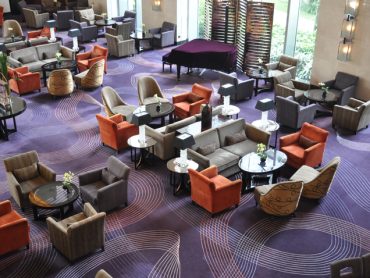The Sound of Silence: In Search of Quiet Guestrooms
I’m fascinated by the sounds of a hotel or, should I say, the distinct lack of sound.
But before I delve into this topic, here is a quick basic primer. Sound travels in waves and you can’t see them. The amplitude of a sound wave is a measurement of how forceful the sound wave is. This measurement is expressed in decibels, or dB of sound pressure. A decibel meter allows you to measure just what level of sound exists in any environment.
We all hear (pun intended) about extremely loud noises and the dangers of prolonged exposure to such cacophony. In fact, there are maximums to the acceptable environmental standards for worker exposure to sound. It is important for hoteliers to understand this for back-of-house locations such as the laundry, kitchen, machine shops and boiler/furnace rooms.
The following chart gives you a standard scale of sound levels. The amount of sound energy doubles every three dB, so moving up the scale by ten dB is roughly a tripling of total sound energy.
Whereas we all share safety concerns at the higher levels of the sound scale, my interest, is at the lower end of the spectrum, namely the ‘sound of silence’. Your guests whose home is a midtown Manhattan brownstone may tolerate a higher level of background noise in their guestroom than a guest from Alaska. The simple fact is that everyone appreciates a quiet bedroom.
Moreover, it’s not just the ‘base’ level of sound that your guests experience. Our minds have an awake-alert system programmed to detect changes in sound levels. Outside street noise is always an issue, but the biggest culprit is self-induced by the property. A reasonably quiet room punctuated by a single ‘cycle on-off’ of a mini-bar fridge compressor can be highly disturbing to a night’s sleep. Traditional window-side HVAC units found in some mid-range properties are also disgusting noise hogs. Newer units are markedly improved, but I’ve still had to shut them off completely and suffer the hot or freezing consequences for the sake of getting my REMs.
A free mobile app, dB Meter Pro, allows any member of your team to quickly grasp the sound levels on property. For the past year, I’ve been measuring the sound level of guestrooms, specifically the sound of the bed pillow at night. Remember that sound levels vary by distance. So the location of the pillow relative to any noise source is a major consideration.
There are a wide number of noisy interlopers that will disturb your guest’s blissful night’s stay. Wall mount AC units, traffic noise, bar fridges and mini-bar compressors, street noise (police sirens are unavoidable), trash compactors, night-time garbage collection, connector doors between rooms, plumbing, gas-powered gardening equipment, corridor elevators and even distant train whistles all contribute to this ‘symphony of sounds’ that a guest may experience while at your property.
The previous chart defined a quiet bedroom at 30 dB. This is all fine and good for a theoretical chart, but my data on hotel guestrooms reveals a much wider range. To me, quiet equates with luxury, and the quieter the better. My own results measured across a sample of 50 properties suggest a direct correlation between hotel quality and ambient sound level.
Setting the record for the quietest guestroom I’ve experienced is ARIA Sky Suites with a 32 dB ‘pillow’ measurement. Logically, suites tend to be quieter as the bedroom is located further away from the corridor. On the opposite end of spectrum, my meter recorded a supposedly ‘quiet night time’ at an older Holiday Inn property at 57 dB. Needless to say, I did not get a very good night’s sleep at this accommodation. And just in case you think that an airport hotel means noisy accommodations, the Novotel Airport Hotel in Auckland registered a low 36 dB during my stopover there.
As an interesting sidebar, there is no AHLA standard for guestroom sound levels. It’s purely at the whim of management to consider this factor in the design.
Some of your guests are deeper sleepers than others and will quite literally sleep through a jet landing nearby. Still others are plagued by a snoring partner (as my wife will testify when I have a bit of a cold), rendering any sleep all but impossible.
So, what can you do, apart from poking the snoring offender? First, download the free mobile app and take some recordings. Appreciate and recognize your guest’s need for quiet. If you are concerned, hire a sound engineer to explore ways to reduce the sound level in your guestrooms. This is critical if you are in the process of renovating. And remember, when it comes to sound, less is more.
(Article by Larry Mogelonsky, published by Hotel News Now on April 18, 2016).




